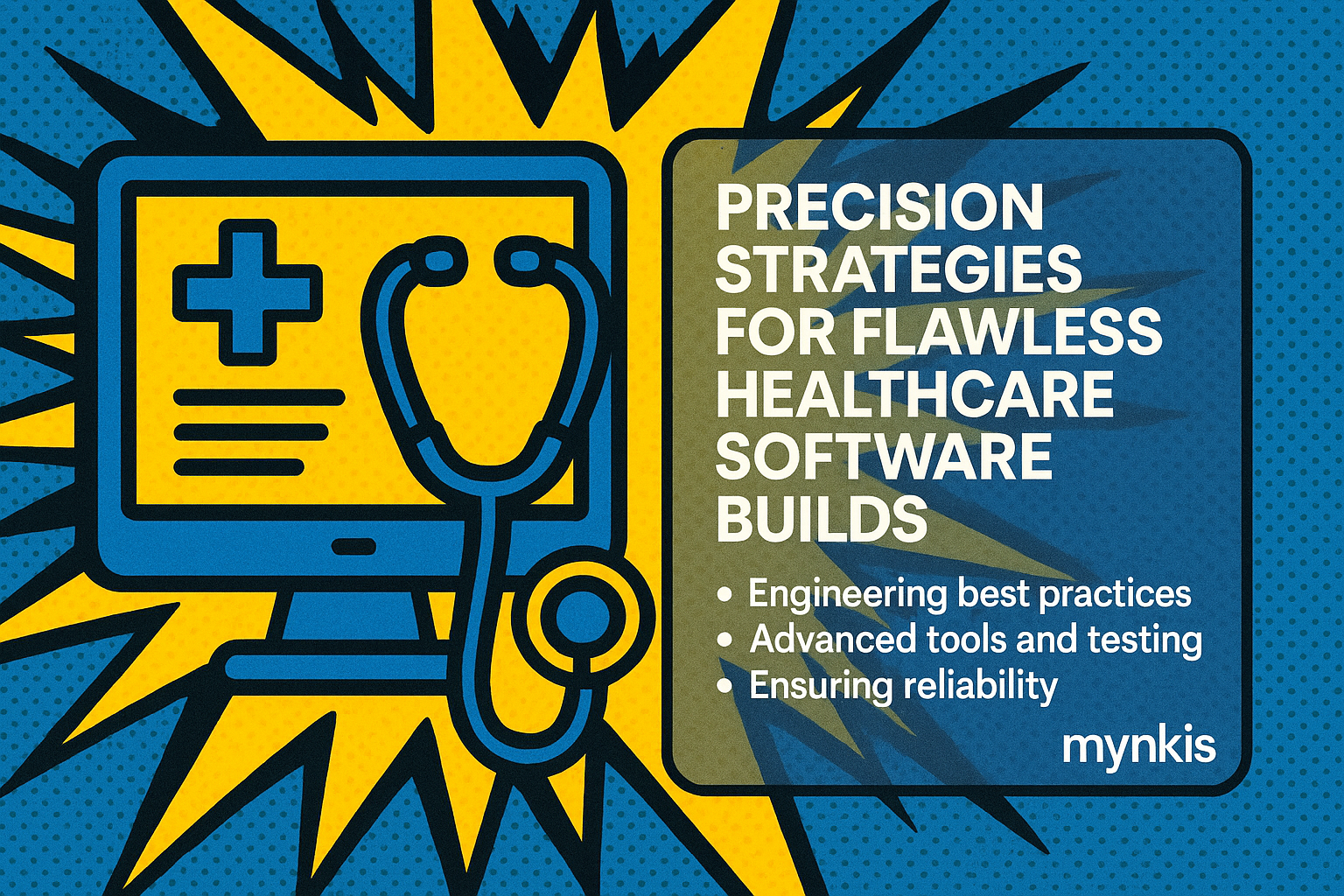Schedule a Demo
In the realm of healthcare software, the stakes are elevated beyond typical software development standards. From patient portals to complex data management systems, every line of code must be flawlessly integrated to ensure patient safety and compliance with regulations such as HIPAA. I've often heard from operations managers in healthcare settings that a single glitch can potentially disrupt entire systems, emphasizing why meticulous code development is crucial.
One cannot overstate the importance of thorough testing in achieving error-free builds. In my experience, integrating automated testing frameworks like Selenium or JUnit into the development process can significantly reduce the likelihood of unnoticed bugs. Moreover, adopting test-driven development (TDD) pushes developers to create test cases before writing the actual code, which often leads to cleaner, more maintainable software. At a renowned hospital I worked with, the deployment of TDD reduced the bug rate by a staggering 30% within the first six months.
Peer code reviews are non-negotiable for achieving robust healthcare software. They bring fresh eyes to complex code bases, often catching issues that the original developer might miss. It's akin to having another doctor review a complicated diagnosis. Regularly scheduled reviews ensure that code is not only functional but adheres to security protocols and regulatory standards, as emphasized by the Health Information Trust Alliance (HITRUST).
Utilizing version control systems like Git or SVN is vital in healthcare software development, where the rollback of erroneous updates can be a matter of patient safety. These systems not only track changes but also facilitate team collaboration, ensuring that any problematic code can be quickly identified and rectified. I recall working on a system where a sudden update led to a critical issue; version control allowed us to quickly revert to the last stable state, minimizing potential patient data exposure.
Building software using modular design principles simplifies the error detection and correction process. By separating the software into independent modules, developers can more easily isolate and address issues without affecting the entire system. This approach, well-supported by tech giants like Microsoft and Google, allows for targeted testing and more efficient debugging, particularly critical when developing intricate patient data management systems.
Implementing CI/CD pipelines in healthcare software development helps maintain an error-free environment by automatically verifying and integrating code changes. When I oversaw the implementation of such a pipeline in a mid-sized clinic's software, the frequency of critical errors plummeted, illustrating its value. Automated deployments ensure that any bugs caught during development are resolved before going live, enhancing patient safety and data integrity.
Static code analysis tools are invaluable in healthcare where code integrity is paramount. They identify potential issues in the source code before runtime, eliminating the chance of errors in sensitive areas such as patient portal security. Tools like SonarQube analyze code against a set of rules focused on security, reliability, and maintainability, which align perfectly with the critical needs of healthcare IT.
The commitment to error-free builds in healthcare can be significantly influenced by fostering a culture that values excellence and accountability. This culture starts at the top; C-level executives must prioritize and support initiatives that enhance quality control. I've witnessed clinics where leadership’s commitment to quality resulted in not just better software but also enhanced overall team morale and trust.
In healthcare, security cannot be an afterthought. Implementing security-centric development practices from the project's inception mitigates risks of errors that could compromise patient data. Incorporating OWASP's Top Ten into the development process is one way to address common vulnerabilities proactively. Frequent vulnerability assessments can help in identifying and rectifying security flaws before they lead to data breaches.
When errors do occur, they should be meticulously documented and analyzed to prevent similar issues in future builds. This practice not only improves current software quality but also accumulates knowledge that can be valuable for ongoing projects. According to a study by the Institute of Medicine, organizations that effectively learn from their errors reduce subsequent error rates by significant margins, highlighting the importance of this practice in healthcare software development.
Compliance with healthcare regulations must be an ongoing process rather than a one-time checklist item. Regular audits help in identifying areas where the code might have drifted from compliance standards, potentially harboring errors or vulnerabilities. Whether these audits are internal or conducted by external bodies, they reinforce the continuous dedication to producing and maintaining high-quality healthcare software.
The user feedback loop is an essential mechanism for improving healthcare software quality. By actively collecting and implementing feedback from both healthcare professionals and patients, developers can refine their products, closing the gap between theoretical builds and real-world performance. This iterative approach, endorsed by companies like Epic Systems, ensures that software continues to evolve, minimizing the risk of errors over time.
Adhering to industry-recognized standards like HL7 for data interchange or DICOM for medical imaging not only ensures interoperability but also facilitates error-free development. By following these standards, developers tap into the collective expertise of the healthcare community, which can help preempt common pitfalls. I often recommend diving deep into these standards to my colleagues who are new to healthcare software, which is crucial for creating systems that are both compliant and reliable.
Effective change management strategies help in mitigating errors introduced during software updates. By controlling and reviewing the changes made to healthcare systems, teams can ensure that each modification meets the necessary quality and compliance criteria. Through structured change management, problems can be addressed systematically, reducing the likelihood of errors causing disruptions to critical healthcare operations.
